IBM Think
The quintessential IBM experience
![]()
IBM's flagship conference, Think, gathers visionaries, technologists, innovators, programmers and business leaders to convene, inspire and learn. Whether it's creating for the cloud, innovating with IoT, breaking barriers with AI and blockchain, or solving the unsolvable with quantum computing Think is a foremost forum for changing the way the world works by putting smart to work.
The quintessential IBM experience
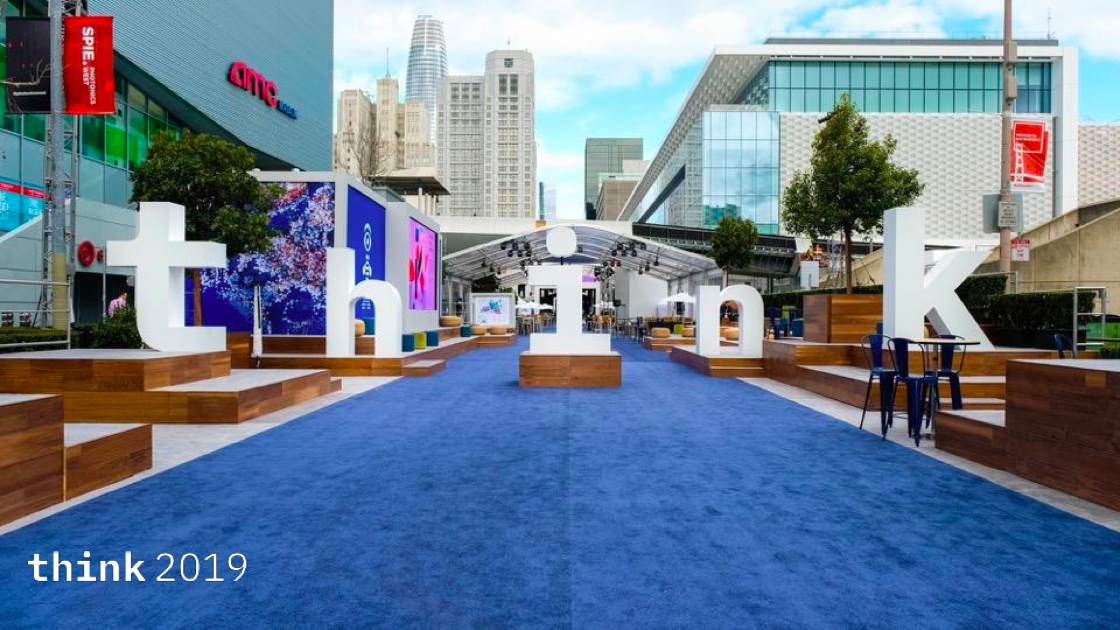
IBM's flagship conference, Think, gathers visionaries, technologists, innovators, programmers and business leaders to convene, inspire and learn. Whether it's creating for the cloud, innovating with IoT, breaking barriers with AI and blockchain, or solving the unsolvable with quantum computing Think is a foremost forum for changing the way the world works by putting smart to work.
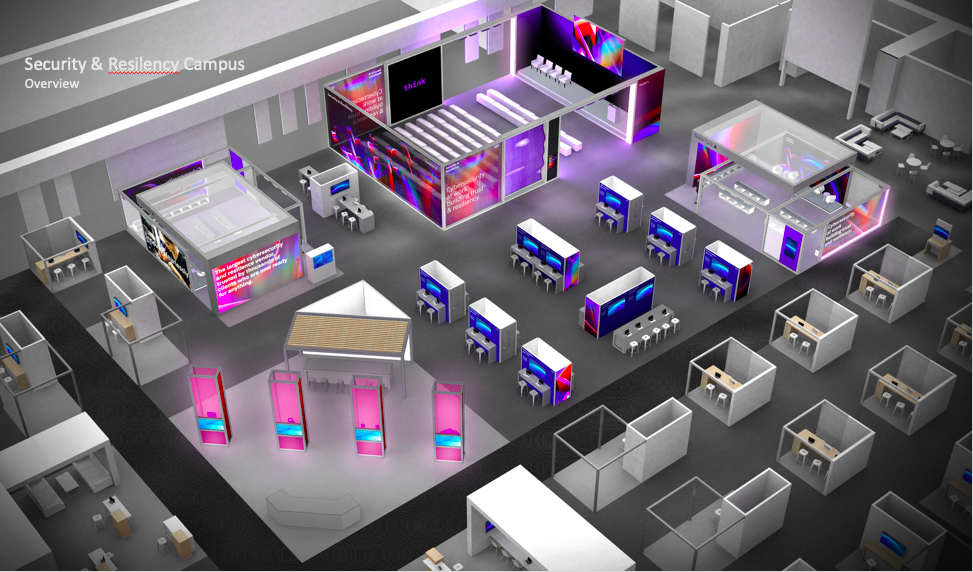
Think by the numbers
- 4000+ leads
- $3.7B in potential lead revenue
- 26000+ attendees
- 3,100 unique speakers
- 2,162 Break out Sessions
- $10.5m in sponsorship revenue
- 175 Businesss Partner Sponsors
- 116 San Francisco hotels booked
We partnered with IBM to develop a comprehensive conference strategy that laid the foundation for experiential success from ticket purchase to space and material design to content experiences and event management across the week.
One crucial shift was furthering a new brand engagement model, away from solutions to customer-centric behavior, focused on how IBM clients use smarter technology and tech services to change the world.
One crucial shift was furthering a new brand engagement model, away from solutions to customer-centric behavior, focused on how IBM clients use smarter technology and tech services to change the world.
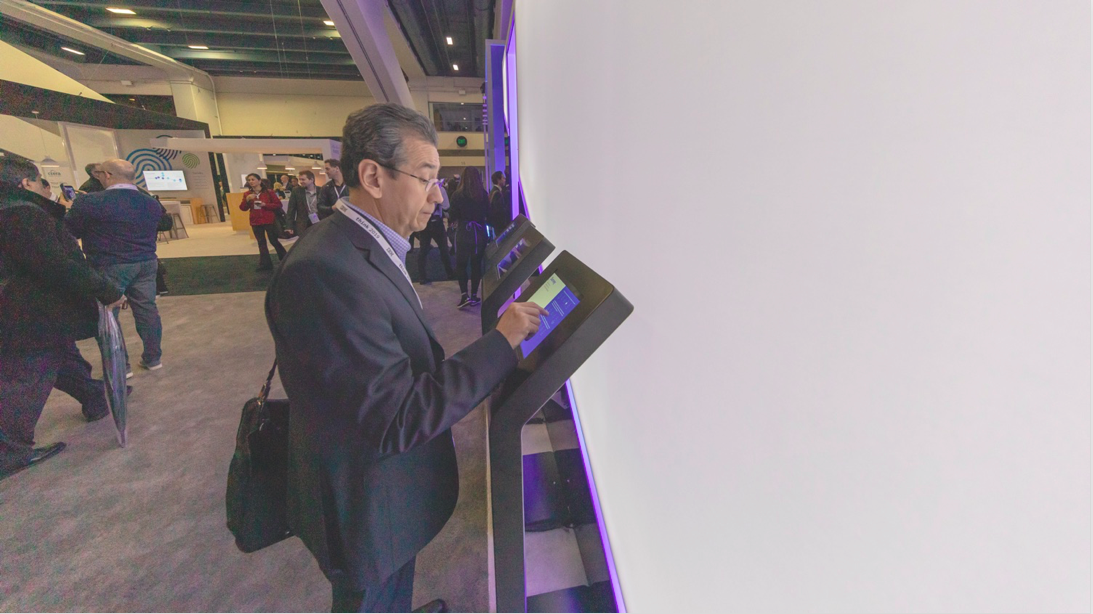



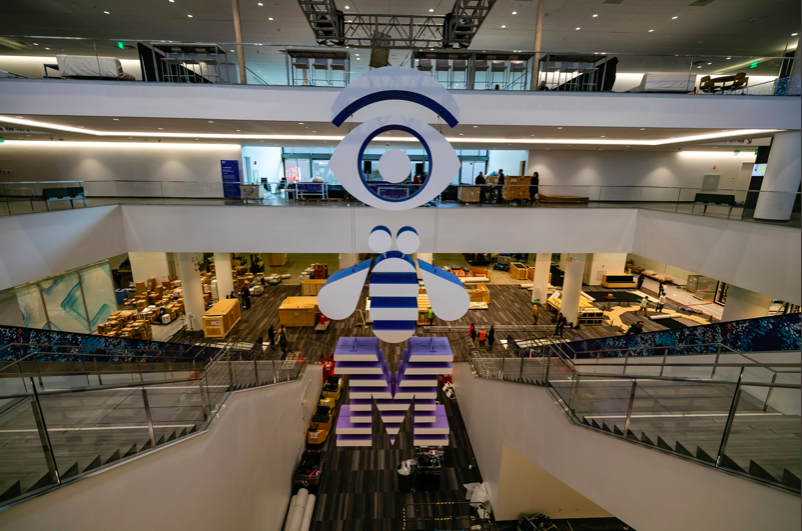

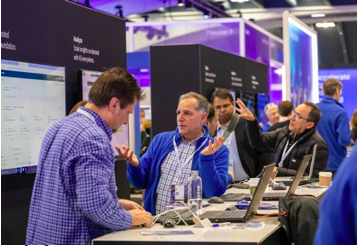

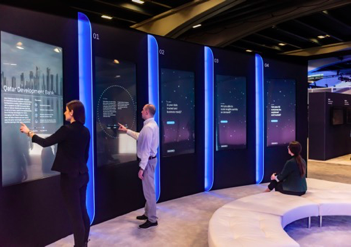

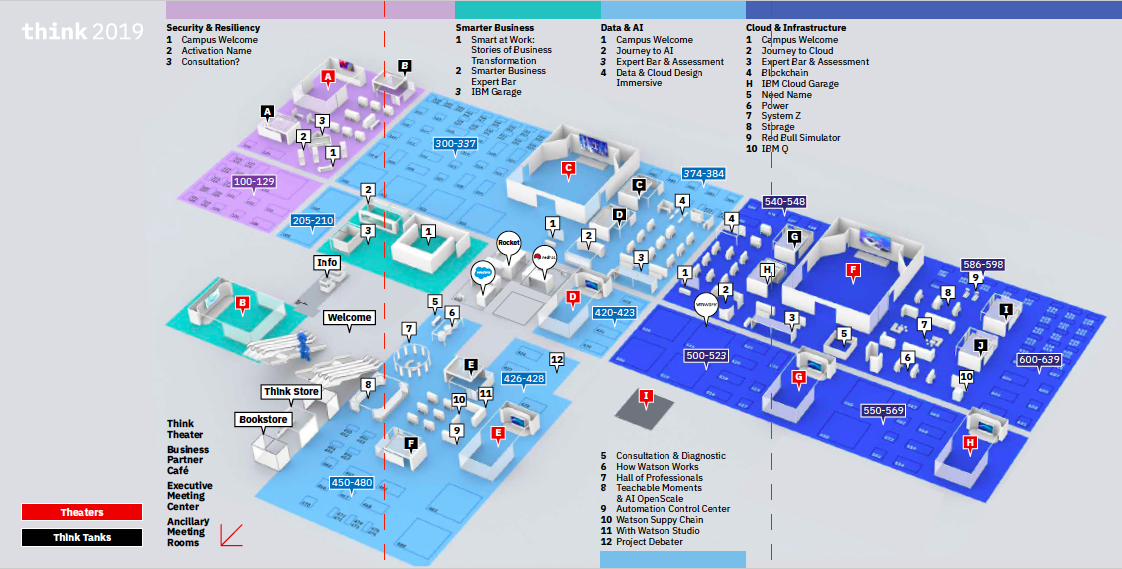
From branding to sponsorships, user-generated content to interactive curriculums, product demonstrations to creative activations, networking to partnerships, a variety of new environment types allowed for more individualized experiences. Event spaces, experiences and content were organized, designed and produced for specific audiences and organized by individual campuses.
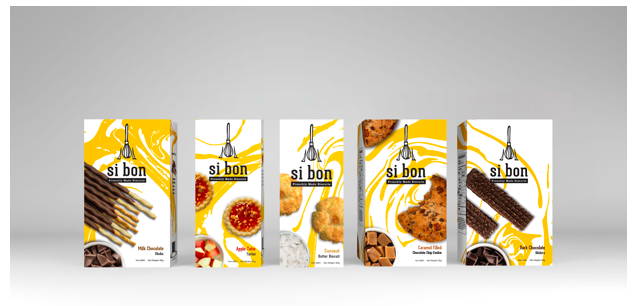
Si Bon
France's second largest biscuit maker (better known as cookies here) ambitiously sought to create and launch a new-to-the-world, premium line of cookies in the United States.
While the last thing the U.S. needed was another cookie, we saw an opportunity to introduce a French product in a way that uniquely fed US consumers unmet needs. Foreign premium brands had long relied solely on stereotypical heritage while showing little interest for American taste or habits for decades. The French on the other hand had the secret to living (and eating) indulgently without guilt.
We saw an opportunity to marry the French approach to life with modern American food habits.
France's second largest biscuit maker (better known as cookies here) ambitiously sought to create and launch a new-to-the-world, premium line of cookies in the United States.
While the last thing the U.S. needed was another cookie, we saw an opportunity to introduce a French product in a way that uniquely fed US consumers unmet needs. Foreign premium brands had long relied solely on stereotypical heritage while showing little interest for American taste or habits for decades. The French on the other hand had the secret to living (and eating) indulgently without guilt.
We saw an opportunity to marry the French approach to life with modern American food habits.
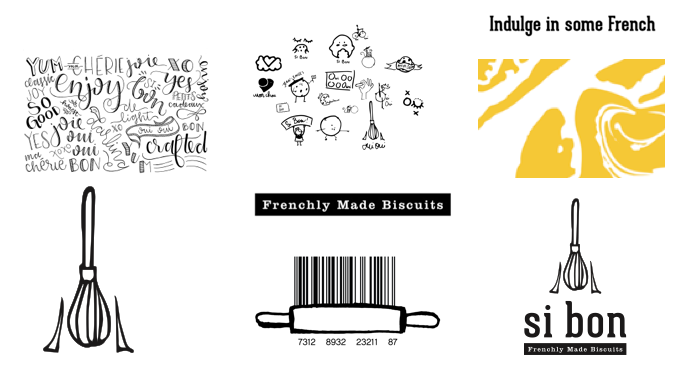
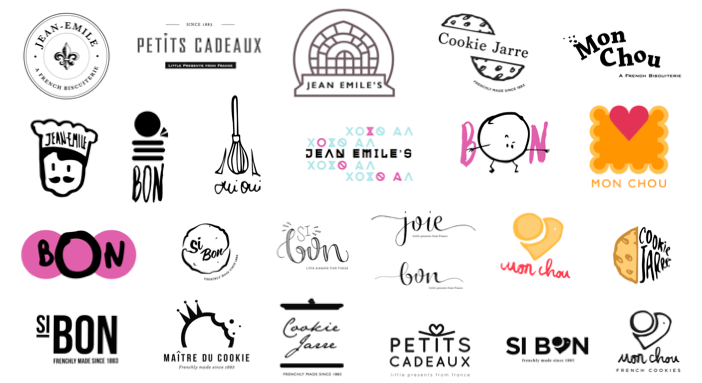

Concept to working prototype - 4 months
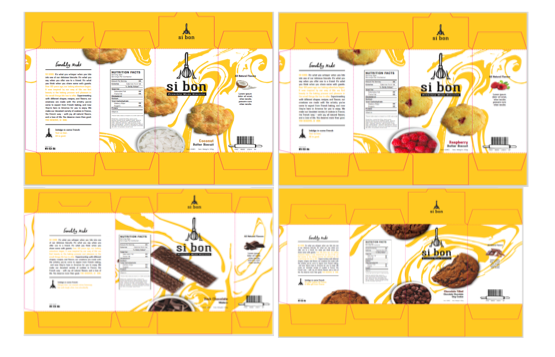

To get our consumers to indulge in some french with our biscuits, we took French ingredients and sensibilities and baked it for American tastes.
This was a custom process that identified market opportunities, built a distinct brand based on brand truths and consumer needs, prototyped product and packaging through nationwide workshops, secured distribution and developed marketing for launch.
In all we developed over 100 different types of brand identities, nearly 25 packaging concepts, and 12 alpha versions for consumer usability testing.
This was a custom process that identified market opportunities, built a distinct brand based on brand truths and consumer needs, prototyped product and packaging through nationwide workshops, secured distribution and developed marketing for launch.
In all we developed over 100 different types of brand identities, nearly 25 packaging concepts, and 12 alpha versions for consumer usability testing.
The goal was never just to launch, but to launch a pipeline of products for future line extensions.
By partnering with Groupe Poult we were able to develop a custom approach for inventing CPG brands, rapidly prototyping by bringing R&D into marketing and commercializing biscuits to help them realize their potential in profound new ways.
By partnering with Groupe Poult we were able to develop a custom approach for inventing CPG brands, rapidly prototyping by bringing R&D into marketing and commercializing biscuits to help them realize their potential in profound new ways.
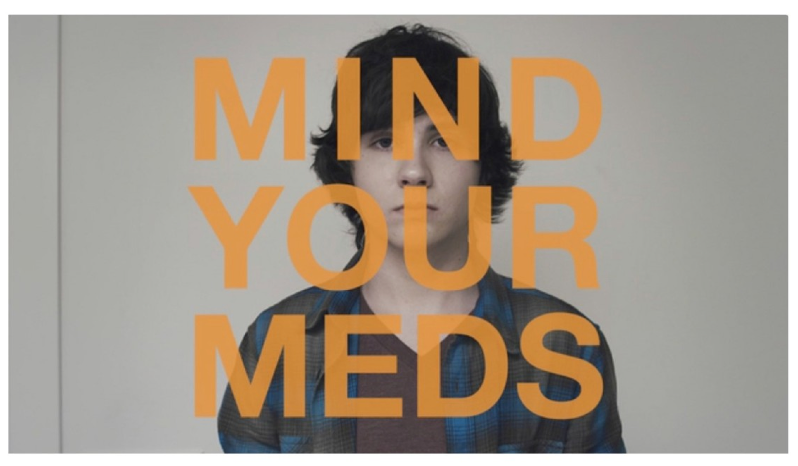
Campaign Theme / tagline
Mind Your Meds
Partnership for Drug Free
The Medicine Abuse Project
Everyday in the US, 2,500 youth abuse a prescription pain reliever for the first time. Prescription drug abuse causes the largest percentage of deaths from drug overdosing, more than cocaine, heroin, methamphetamine and amphetamines (39%) combined.
Where are they getting these drugs?
Not from the streets or a dealer, but from medicine cabinets of family and friends.
Partnership for Drug Free
The Medicine Abuse Project
Everyday in the US, 2,500 youth abuse a prescription pain reliever for the first time. Prescription drug abuse causes the largest percentage of deaths from drug overdosing, more than cocaine, heroin, methamphetamine and amphetamines (39%) combined.
Where are they getting these drugs?
Not from the streets or a dealer, but from medicine cabinets of family and friends.
- 1/3 of teens believe “it’s okay to use prescription durgs that weren’t prescribed to them to deal with an injury, illness or physical pain” (2015
- 43% of teens indicated prescription drubs are easier to get than illegal drugs
- More than 4/10 teens who have misued or abused a prescription drug obtained if from their parents medicine cabinet.
Insight
All medicine is bad if taken
incorrectly. Start taking prescription drugs seriously.
incorrectly. Start taking prescription drugs seriously.
Strategy
Make people aware they aren't the only one paying attention to their medicine.
Idea
We asked people to simply "Mind Their Meds".
To do so we created a communication plan that started with mass media (TV, print, digital) and went all the way to first time someone holds a prescription in their hands.
Custom-printed prescription bags were distributed to pharmacies, reminding people to keep their medicines safe from the eager hands and mouths of others. Monthly sheets of safety seal labels were distributed to parents as a way to help tabs on where their medicine was and if it had been opened.
To do so we created a communication plan that started with mass media (TV, print, digital) and went all the way to first time someone holds a prescription in their hands.
Custom-printed prescription bags were distributed to pharmacies, reminding people to keep their medicines safe from the eager hands and mouths of others. Monthly sheets of safety seal labels were distributed to parents as a way to help tabs on where their medicine was and if it had been opened.
Experiential Branding
To change behavior we developed pill and bag packaging that was a stark reminder to the potential of the medicine inside.
![]()
Pharmacy bag
(printed and used in tri-state area)
To change behavior we developed pill and bag packaging that was a stark reminder to the potential of the medicine inside.
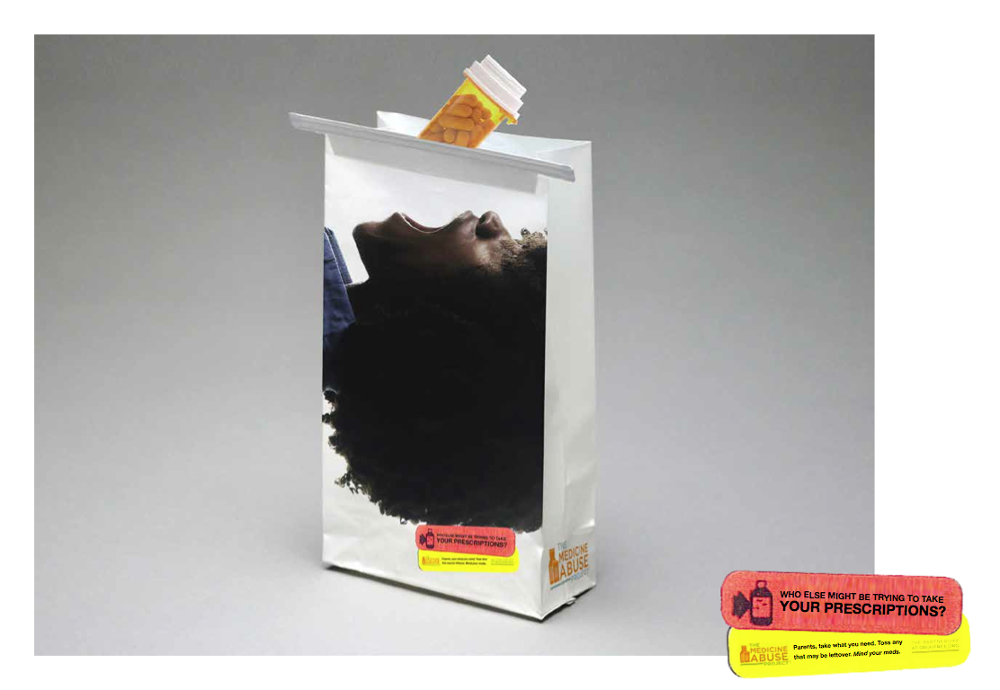
Pharmacy bag
(printed and used in tri-state area)
 Pill labels
Pill labels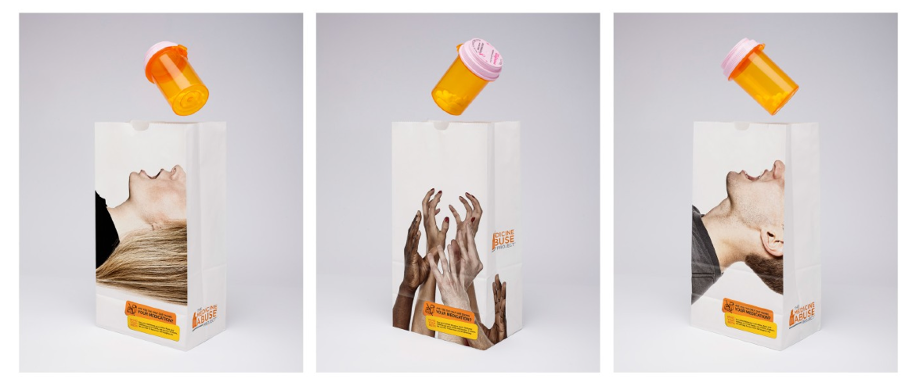
Digital / TV
Our screens campaign brought a stark reminder on the dangers of pill abuse.
Our screens campaign brought a stark reminder on the dangers of pill abuse.

Results
- 2014 Cannes Gold Lion in Pharmaceutical Category
- Clio - Bronze - Health & Services Film
- Clio - Bronze - Health & Services point-of-purchase
#WeGotYou — The world’s first emoji-only anti-drug PSA campaign

Evaluations of the National Youth Anti-Drug Media Campaign, have been increasingly sobering: one analysis found that ads had no effect on kids' marijuana use or intentions to use, and may have even increased a desire to smoke pot among some kids.

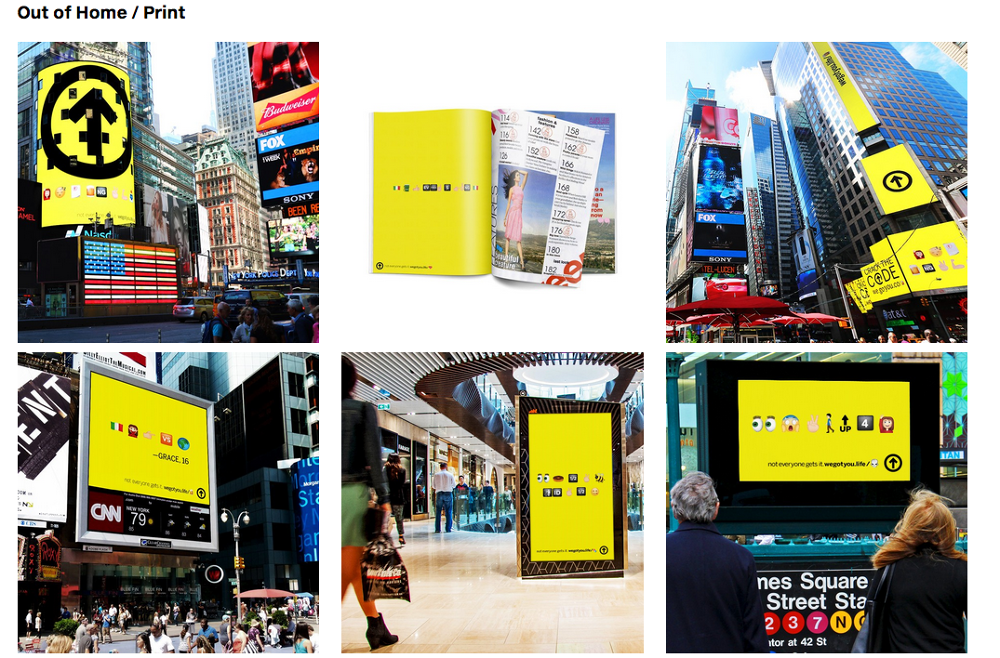

Insight
Being a teen is about gaining self-awareness, yet ultimately they measure themselves against peers.
Esteem is everything for teens. Their happiness is innately tied to feeling part of something bigger like a group. Positive self-esteem comes from being comfortable or know they can recover from mistakes when learning to make choices.
Esteem is everything for teens. Their happiness is innately tied to feeling part of something bigger like a group. Positive self-esteem comes from being comfortable or know they can recover from mistakes when learning to make choices.


We sought to enable teens’ esteem by helping them fight influences honestly.
Strategy
An ATI campaign that’s purely traditional advertising wouldn’t do enough to help build teen’s esteem nor enable them to rise above the influences. ATI needed evolve into a mindset platform where teens have the tools to feel better about themselves through positive decision-making.
This fundamentally shifted our work beyond TV, activating utility and participation closer to real moments of influence, when teen need help the most. We sought to enable teens' esteem by helping them fight influences honestly.
The best way to co-exist in teens’ lives was not a single piece of content, rather lots of little things within their everyday worlds, so teens could respond to what spoke to them.
The first part of the campaign featured a cryptic string of emoji characters appearing in print, online, in theaters, and even on billboards in New York's Times Square.
Linguistically emojis were the perfect fit for our audience – today’s teen slang. It’s an authentic voice of teens -- ideal to deliver an empowering message rather than a fear tactic.
This fundamentally shifted our work beyond TV, activating utility and participation closer to real moments of influence, when teen need help the most. We sought to enable teens' esteem by helping them fight influences honestly.
The best way to co-exist in teens’ lives was not a single piece of content, rather lots of little things within their everyday worlds, so teens could respond to what spoke to them.
The first part of the campaign featured a cryptic string of emoji characters appearing in print, online, in theaters, and even on billboards in New York's Times Square.
Linguistically emojis were the perfect fit for our audience – today’s teen slang. It’s an authentic voice of teens -- ideal to deliver an empowering message rather than a fear tactic.
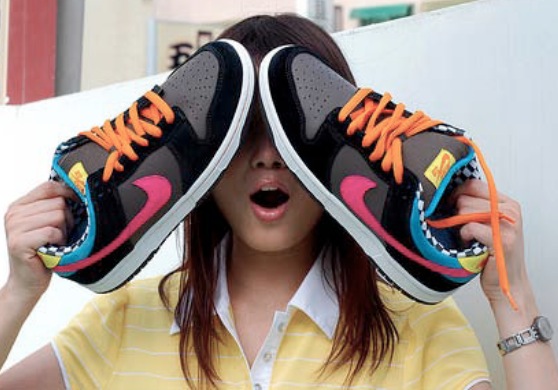
Challenge
Nike’s mission is to bring inspiration and innovation to every athlete in the world. The brand was looking to understand the global intersections of youth style consciousness with digital lifestyles to inform the future of their business and consumer products.
It was critical to understand how consumers defined style, how they shopped, and how the junction between style and technology could enable them to shop. Nike wanted to understand differences not only across typologies, but how those variedacross the globe.
To help live this mission, we traveled the world talking and running immersion sessions with trend-setters, core athletes and those inspired by them.
Insight
We uncovered a range of insights such as “its not what you wear but how you wear it” and “consumers experience passion through attention to product detail”, each leading to actionable thoughtstarters for the brand and business.
Strategy
While consumers each had their own passions and commitment to style, they all wanted to mix lifestyle with function. They could get one or the other, but rarely both in the same place. We learned how Nike could tap consumer's passion for their products to better facilitate a purchase.
Work
Our key global insights and cultural threads helped develop better UX design, more immersive shopping technology, and a more dynamic online retail environment to engage consumers.